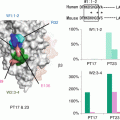Bleeding risk
Reference
Fever (38.5 °C<)
[13]
Infection
[13]
Anticoagulant drugs
[14]
Amphotericin use
Hypoalbuminemia
[16]
Uremia
[16]
Recent bleeding episodes
[16]
Recent bone marrow transplantation
[16]
Acute GVHD
Veno-occlusive disease
Poor risk disease
[18]
Hematocrit may affect the risk for bleeding in thrombocytopenic patients. There is evidence that the higher hematocrit reduces the bleeding risk in thrombocytopenic patients [20, 21]. Red cells displace platelets toward the endothelial surface where they can more effectively respond to vascular injury [22, 23]. This effect of red blood cells on platelets may be responsible for reduction of bleeding risk. Although ITP patients usually have a normal range of hematocrit, red blood cell transfusion may promote effective hemostasis in ITP patients with low hematocrit due to massive bleeding.
5 Prophylactic Versus Therapeutic Platelet Transfusion
As mentioned above, many bleeding risk factors other than thrombocytopenia have been identified, and no relationship between platelet counts and bleeding risk was demonstrated in a large retrospective study [11, 16]. These findings raised a question as to whether a platelet count threshold-defined prophylactic platelet transfusion is appropriate as a standard clinical practice. Recently, two large randomized controlled studies were conducted to compare the benefit of prophylactic platelet transfusion using a trigger of 10,000/μL with therapeutic platelet transfusion (platelets were transfused only when significant bleeding occurred) in patients with intensive chemotherapy for acute myeloid leukemia and hematopoietic stem cell transplantation [24, 25]. Both studies showed that patients with therapeutic platelet transfusion had a higher risk for bleeding than patients with prophylactic platelet transfusion. These studies suggest that platelet count-defined prophylactic platelet transfusion is justified as an effective supportive care for patients with hematologic malignancies. Patients who received prophylactic platelet transfusion at 10,000/μL threshold can maintain vascular integrity necessary to prevent spontaneous bleeding because the minimum platelet count requirement for vascular integrity is assumed to be around 5000/μL, as described above (see Sect. 2. in this chapter). This may explain the efficacy of platelet count-based prophylactic platelet transfusion strategy. However, in ITP patients, the rise in platelet counts following platelet transfusion is not seen because of rapid destruction of transfused platelets. Prophylactic platelet transfusion should not be applied to ITP patients and therapeutic platelet transfusion can be used for selected patients (see below).
6 Dose of Platelet Transfusion
The appropriate number of platelets in prophylactic platelet transfusion has been assessed in two randomized controlled trials. The PRADO trial compared three different doses (low: 1.1 × 1011/m2, medium: 2.2 × 1011/m2, high: 4.4 × 1011/m2) of platelets with the risk of WHO grade 2 bleeding [6]. This study demonstrated that there was no significant difference in the incidence of major bleeding among three-dose groups, while the number of platelet transfusions given was significantly higher in the low-dose group. This finding suggests that higher doses do not result in higher preventive effect on bleeding; however, it reduces the number of platelet transfusion, which has the advantage of longer intervals between transfusions and of reduced chance of transfusion-associated adverse effects. Another trial, STOP study, evaluated two different doses (low: 1.5–2.9 × 1011 platelets/product, high: 3.0–6.0 × 1011) of platelet transfusion in patients with chemotherapy-induced thrombocytopenia [26]. Even though the numbers of patients with grade 2 or higher bleeding was comparable in the two groups, the trial was stopped early when 5% of the patients with low dose had grade 4 bleeding. In ITP, there is no study comparing different platelet doses.
7 Platelet Transfusion During Treatment for ITP
The efficacy of platelet transfusion in the management of ITP remains obscure. Transfused platelets have a shortened survival in ITP, and it is thus questionable whether transfused platelets effectively contribute to hemostatic plug formation at the bleeding site [27, 28]. On the other hand, successful treatment of platelet transfusion alone or in combination with intravenous immunoglobulin (IVIG) has been reported [29–32]. Salama et al. [30] reported that ten patients with refractory ITP and bleeding or a high bleeding risk received platelet transfusion, resulting in an increase in the platelet count to 84–157 × 103/μL and the cessation of bleeding in all patients without any serious adverse effects. Spahr and Rodgers [31] reported that 40 patients were treated with prolonged infusions of IVIG (1 g/kg by continuous infusion over 24 h) and concurrent platelets (1 apheresis unit every 8 h), resulting in an increase in the platelet count >50,000/μL in 62.7% of patients and clinical improvement in bleeding. These studies suggest that platelet transfusion may have clinical benefit for ITP patients with severe active bleeding or surgical procedures. However, there is no randomized controlled study of platelet transfusion in ITP. In a nationwide survey in the United States, 25.8% of inpatients with ITP received platelet transfusion [33]. Although the efficacy of platelet transfusion in these patients was not reported, this survey demonstrated no adverse thrombotic event associated with platelet transfusion in ITP. Platelet transfusion can be thus used as therapeutic transfusion in ITP patients with life-threatening bleeding or emergent surgical procedures. However, prophylactic platelet transfusion to ITP patients with severe thrombocytopenia but no major active bleeding should not be recommended.
Platelet transfusion may be considered before splenectomy in ITP patients refractory to steroids and IVIG. In ITP patients with platelet counts <10–20 × 103/μL who underwent laparoscopic splenectomy, retrospective analysis of operative outcomes including blood loss and operative time between patients with and without platelet transfusion showed no significant difference between the two groups [34, 35]. The main cause of the increase in intraoperative blood loss was unexpected bleeding from splenic capsular tears during manipulation or from venous branches near the hilum [34]. In addition, platelet count may increase rapidly to a safe level. Based on these findings, laparoscopic splenectomy can be a safe and feasible procedure in ITP patients with platelet count less than 10 × 103/μL without platelet transfusion.
References
1.
Slichter SJ. Controversies in platelet transfusion therapy. Annu Rev Med. 1980;31:509–40.CrossRefPubMed
Stay updated, free articles. Join our Telegram channel

Full access? Get Clinical Tree




